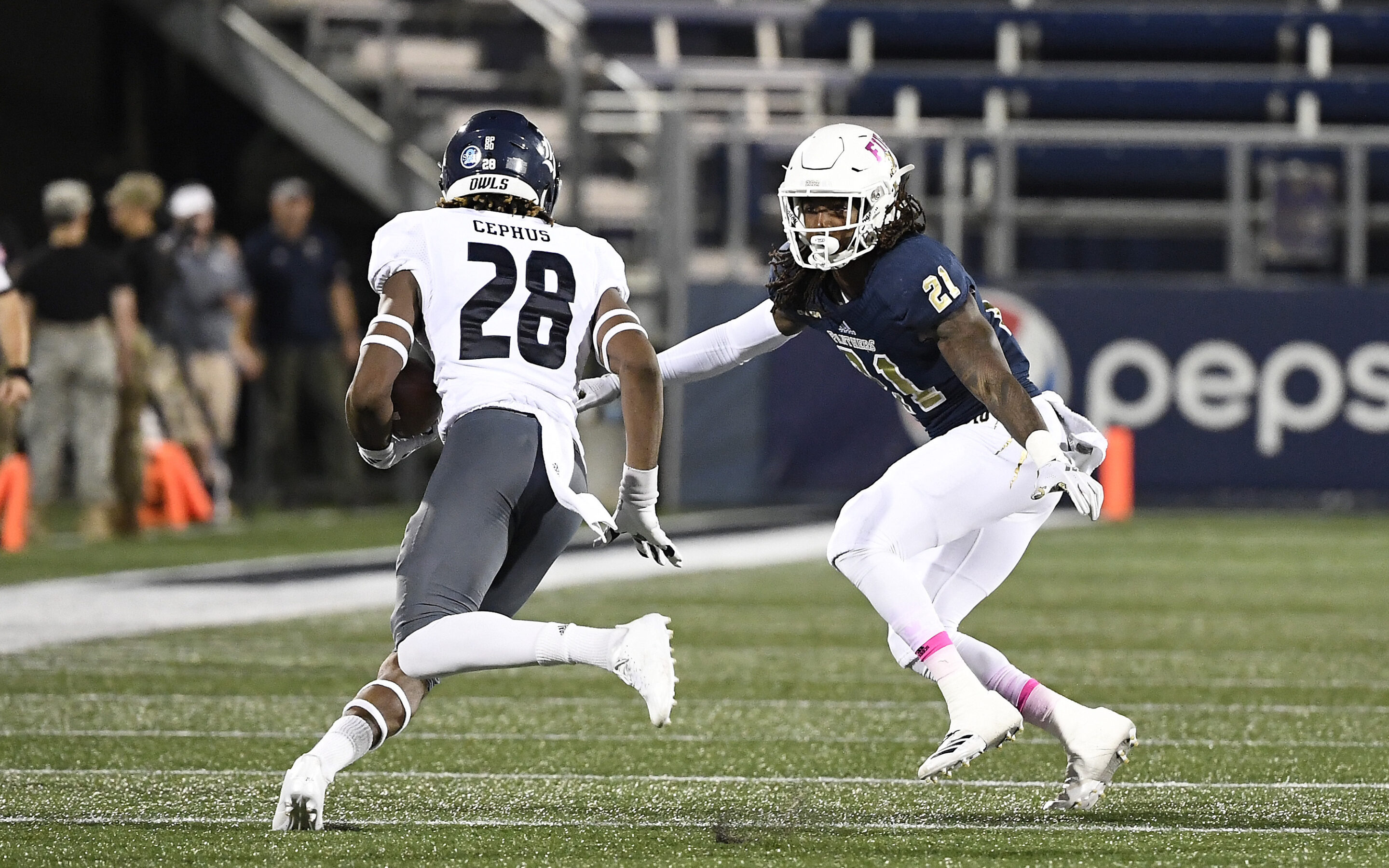One word that came up a lot during Matt Rhule’s press zooms (to coin a phrase) both during and after the draft was ‘developmental’ – and while Rhule made it very clear that he doesn’t see this as a negative, almost all the Panthers’ picks in the 2020 draft class are players who are still in the process of developing, and who have the potential to make significant improvement through the early portions of their respective careers.
“I never look at the word “developmental” in a bad way. It doesn’t mean that they are rudimentary or they are behind,” said Rhule. “I look at it like guys are at different phases of their ability level. We are getting guys who have performed at a high, high level on big stages but these guys’ traits and athletic abilities are really second‐to‐none at their positions.”
“When I say developmental I don’t mean, hey they are not where they need to be……it just means these guys all have tremendous upside moving forward”
No player in the Panthers’ draft class is quite as developmental as their seventh-round pick, cornerback Stan Thomas-Oliver, who transitioned to the defensive side of the ball from receiver prior to the 2018 season.
While it is unlikely that he sees the field in 2020 barring remarkable development and/or injury, it is worth taking a moment to consider why the Panthers selected him, and what he might be able to offer the Panthers – along with what he needs to fix and develop in order to make the most of the talent he has.
Pass Coverage
For cornerbacks, value is almost entirely comprised of their ability in coverage, and a cornerback who only transitioned from receiver two years ago is unlikely to be fully developed and will need further coaching to reach his potential – or even to get close to it. These should be two fairly uncontroversial statements, and both are relevant when assessing Thomas-Oliver on tape. If we go back to the skillset the Panthers look for in cornerbacks for a moment, Thomas-Oliver certainly fits the bill at 6-0 and 192 pounds with a 40 yard dash of 4.48 seconds at the Combine.
While that isn’t in the very top tiers of cornerback speed, he showed little problem running vertically with receivers on tape (Thomas-Oliver wears #21 — and is recognizable by his dreadlocks):
However, playing corner is about a lot more than being able to run fast in a straight line, and it is in the details that Thomas-Oliver shows both potential and the need for further improvement. At the line of scrimmage, he does a nice job of reacting to the initial movement, but does need to keep his feet moving early in plays, as he tended to get too stationary and end up having to chase plays after getting behind early:
This is also something of an issue in off-coverage, where he can sometimes be guilty of unnecessary steps that put him out of position momentarily:
This might seem like a little thing, but these lost steps can then force him to chase a play, which gives the receiver a chance to capitalize down the field:
Marty Hurney also said that they are looking for players who can open their hips and run vertically with receivers – and Thomas-Oliver does show a really nice ability to do exactly that on tape:
However, he could do with opening up his hips more consistently, as there are times when he gets a little pigeon-toed and this creates some issues changing direction:
And while it isn’t hugely surprising that a player who has only spent two years at the position will need to continue to polish his footwork, if he is unable to improve in this regard, he is likely to struggle against better route runners who are able to exploit his mis-steps and turn that into easy separation:
Of course, coverage is about more than the ability to run with receivers in man, and while footwork will also be relevant in zone coverage, a player’s ability to read the game is also hugely important. Here, Thomas-Oliver shows pretty good instincts, breaking on the ball well and at times using his understanding of routes to anticipate where the ball is going to go:
And also shows flashes of good awareness, breaking off his initial responsibility when he recognizes another defender taking away his man:
And he has the ball skills to make the most of the positions he is able to put himself in:
Thomas-Oliver is certainly a work in progress, and he would benefit massively from not being thrown in at the deep end right away, but he shows a lot of promising traits on tape – for a seventh-round investment, there is really a lot to like. What is also encouraging is how much progress he showed in terms of his improvement from 2018 to 2019, as when going back to his 2018 tape his backpedal is extremely ponderous – as if he is really concentrating on where he is putting his feet rather than reacting to what is happening in front of him:
And in 2018, his somewhat tight hips were even more pronounced, leading to clunky footwork at the top of routes:
While there is clearly still more work to be done, the fact that his arrow is still definitely pointing up is an encouraging one.
Of course, playing cornerback isn’t all about coverage…
(Top Photo Via FIU Athletics)



